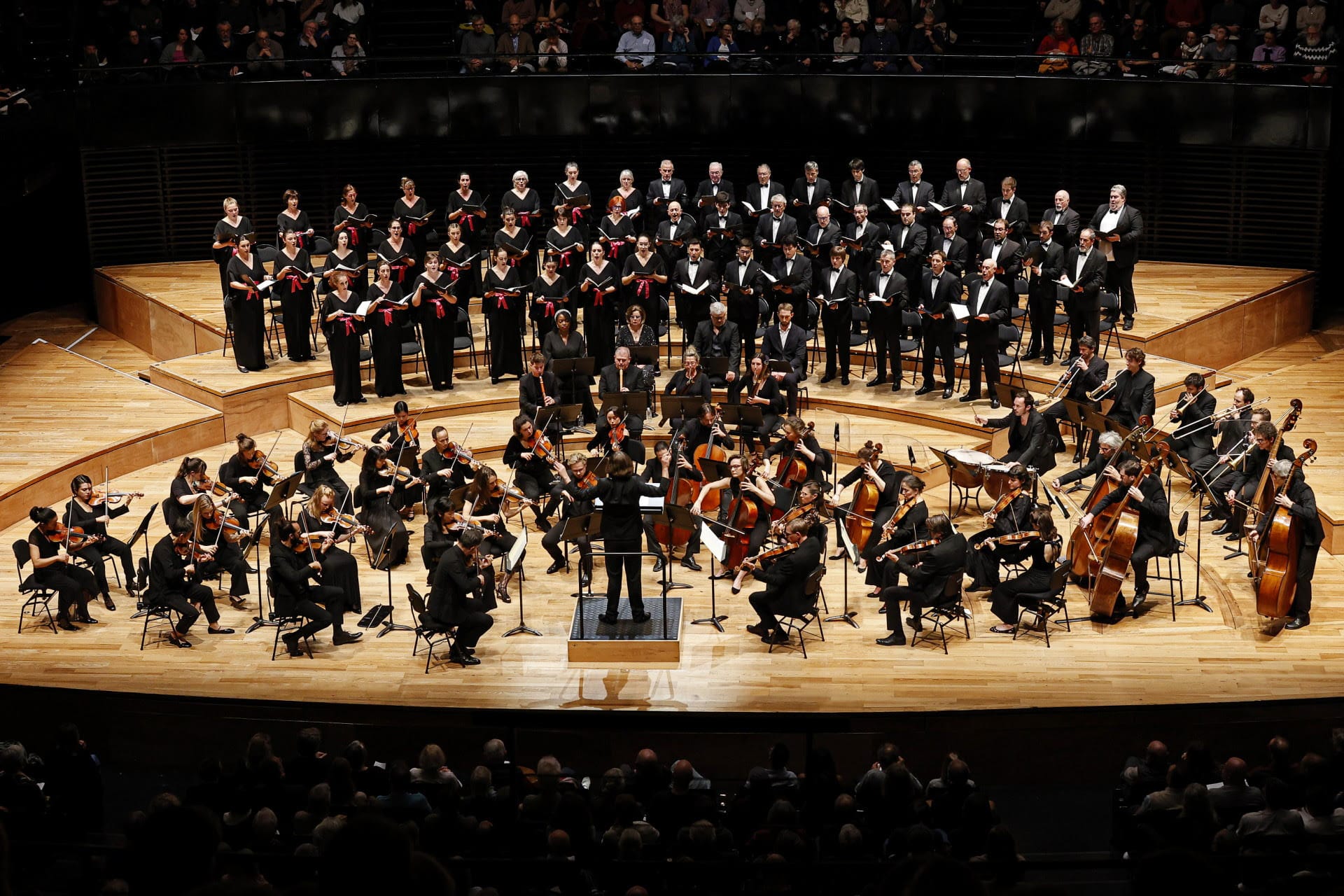Brahms & Mozart in Paris

Brahms, Mozart Axelle Fanyo (soprano); Agnieszka Rehlis (mezzo); Werner Güra (tenor);Guilhem Worms (bass); Chœur Orféon Donostiara; Le Cercle de l'Harmonie / Jérémie Rhorer, conductor. Philharmonie, Paris, 4.11.2025
Brahms Alto Rhapsody, Op. 53 (1869)
Mozart Requiem, K 626 (1791, completed Süssmayr)
Jérémie Rhorer and his Le Cercle de l'Harmonie have previously impressed me only via disc: a tremendously fresh interpretation of Beethoven's Missa solemnis on Alpha Classics, again with Le Cercle de l'Harmonie (albeit with a different choir). Hearing them live seals the deal.
Presented to a packed house in Paris, Rhorer and his forces juxtaposed some of the darkest regions of Brahms' output with Mozart's valedictory Requiem (in the Süssmayr completion). Presented as one span, it worked magnificently. Rhorer's handling of texture in Brahms' Alto Rhapsody meant everything was audible from the orchestra: the opening was both dark and lean. The piece has a rich and noble history, not least given that the soloist at the first performance in March 1870 was one Pauline Viardot: remember Marina Viotti's recorded tribute, also see Chère Nuit and Le Voyage. Discographically, it is difficult to ignore the likes of Christa Ludwig (with Klemperer, most famously) and Janet Baker (with Boult) from the recorded canon. But, as in Rhorer's recording of the Beethoven nd his subsequent performance of the Mozart's Requiem, the conductor asks us to rethink the piece, to hear with fresh ears. The ominous nature of the opening was all there; after all, our protagonist is engulfed by a wasteland in Goethe's text (from Herzreise im Winter) before the end of the first stanza.
The soloist, Agnieszka Rehlis, possesses a voice perfect for Brahms' portrait of desolation; coupled with this was Rhorer's ideal pacing. And when Goethe turns his gaze upwards to Heaven ('Ist auf deinem Psalter'), it was like the sun came out. The piece also features male voices from the chorus, and those of the Chœur Orféon Donostiara were here perfectly balanced. How powerfully the text emerged in Rehlis' delivery and under Rhorer's unfolding; a triumph.

It is rather nice that the Alto Rhapsody ends on a nicely 'church' (plagal) cadence and we moved, then, to the Mozart Requiem, a piece which holds extremes of emotion; and there was an almost ritualistic aspect of parts of Rhorer's interpretation. One could suggest, too, that the leaden weight of Mozart's 'Agnus Dei' harkens back (in terms of this programme's order) to the Brahms. There is a direct parallel, too, between the crepuscular timbres of the opening of Brahms' Alto Rhapsody and those of the 'Introitus' of Mozart's Requiem. Perhaps this is where that ritualism was at its clearest: an onward and inexorable tread, a funerary processional. Rhorer ensured there was never any loss of pace, increasing the impression this was like some sort of slowly moving juggernaut. His tempos are clearly the result of much reflection: the move to the 'Hosanna' was superb.
Mozart's counterpoint often emerged as post-Handelian in its levels of pomp and grandeur, often underlined by the pinpoint accuracy of Le Cercle d'Harmonie's trumpets and drums; and throughout one became aware of Mozart's referencing of Baroque tropes. Nothing could prepare one for the sheer force of the 'Dies irae,' though, a visceral moment if ever there was one. The choir throughout was maximally responsive to Rhorer's ideas, not least in the extraordinarily moving 'Lachymosa,' its effect underlined by the conductor''s awareness of Mozart's gestural approach here. His tempos always made sense, often adding great urgency: the 'Domine Jesu Christe' a case in point, with 'Quam olim Abrahae' imbued with real backbone.
The soloists were generally very strong; tenor Werner Güra excelled, notably in his 'Mors stupebit'; Rehlis was a solid mezzo, and Axella Fanyo's soprano was almost vibratolessly pure. Only the bass Guilhelm Worms disappointed in his projection, particularly in the 'Benedictus'. But the genius was in the choice of how each fitted into a totality; when Mozart asks for the soloists as a group, rarely have they emerged as such a cogent vocal unit, in my experience.
It was Rhorer's panoramic view that convinced, though: for all of his Baroque references, and his awareness of Mozart's rhetoric, above and beyond all that was Mozart's Requiem (even factoring in Sûssmayr's hand) as an organic whole; it was as if a single line had been drawn from the first bars to the final 'Communio: Lux aeterna'. A perfect melding of historically-informed performance practice with structural integrity; and it's not often one gets to say that.
As an indication of the level of thought behind this, the Brahms was performed at A = 438 Hz; the Mozart at A = 430 Hz (modern concert pitch is A = 440 Hz).
A terrific evening; and rightly, no interval, so concentration was maintained.
Photos © Caroline Doutre
